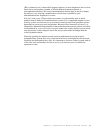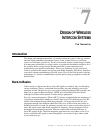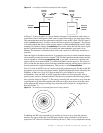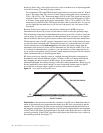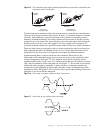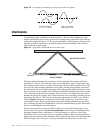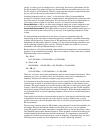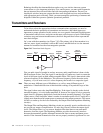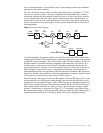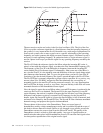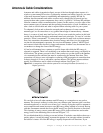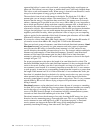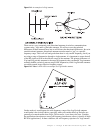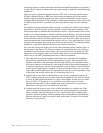Chapter 7 - Design of Wireless Intercom Systems 101
greatly. As these levels are changed over a wide range, the receiver performance will be
greatly degraded. The greater the physical distance between transmitter and receiver, the
less the receiver will be affected. Likewise, the greater the frequency separation between
the two, the less the receiver performance will be affected.
Selecting frequencies that are “clean,” or free from the effects of intermodulation
products, is essential to good wireless communications. Intermodulation is often one of the
prevalent sources of system interference. We touch on just the basics of intermod here so
you can get a sense of what it is and how it works. As stated in an earlier chapter,
intermodulation, or IM as it is often called, happens when two or more frequencies mix
in a non-linear device and produce a number of related different frequencies known as
intermodulation products. These IM products can cause severe, harmful interference to a
wireless intercom system if they fall on or near any of the operating frequencies of that
system.
For intermodulation interference to take place, at least two transmitters must be
broadcasting at the same time on frequencies that have a definite, calculable relationship
with the affected receiver. In many cases of IM interference the receiver can detect and
demodulate the IM product almost as cleanly as if one of the interfering transmitters was
on the operating frequency of the receiver. Turning off either one of the two (or more)
transmitters will cause the IM interference to cease.
Because there is a fixed and calculable relationship between frequencies, intermodulation
products can be calculated and avoided. Here is an example of some of the more common
IM products that can be calculated:
2A – B = C
2(651.500 MHz) – 650.000 MHz = 653.000 MHz
A – B + C = D
184.000 MHz – 190.600 MHz + 188.200 MHz = 186.400 MHz
3A – 2B = C
3(518.200 MHz) – 2(520.500 MHz) = 513.600 MHz
There are, of course, many other combinations that can cause harmful interference. These
examples give you a good idea of how the calculations work, but for comprehensive
frequency selection, an advanced computer program must be used.
It is important to note that intermod products are not created in the air, they are the result
of the mixing of signals in non-linear devices such as amplifiers or other usually active
elements. The most common place for this mixing to take place is in the active receiver RF
circuitry. Once RF signals get past the receiver front end and get to the first RF amplifier
and beyond, mixing of those signals can and will take place. If the intermod products that
are generated fall on or near the operating frequency of the receiver, harmful interference
will be heard.
Good quality receivers have front ends that are passive, linear devices that limit the range
of frequencies that will enter the rest of the receiver circuitry. Making sure you pick
wireless intercoms with well designed front ends, is critical to proper operation in hostile
RF environments.
The next most common place for IM products to be generated is in the final amplifier of a
transmitter. Because the transmit antenna can and does also act as a receive antenna,
strong RF signals from nearby transmitters can make their way into the non-linear, active,
final amplifier and produce intermod products. These products can then be broadcast out
with the intended signal and cause harmful interference. It is important to note that IM
products do not have to end up exactly at a receive frequency. Sometimes, they can be of
sufficient power at relatively close frequencies to create a desensing situation.



